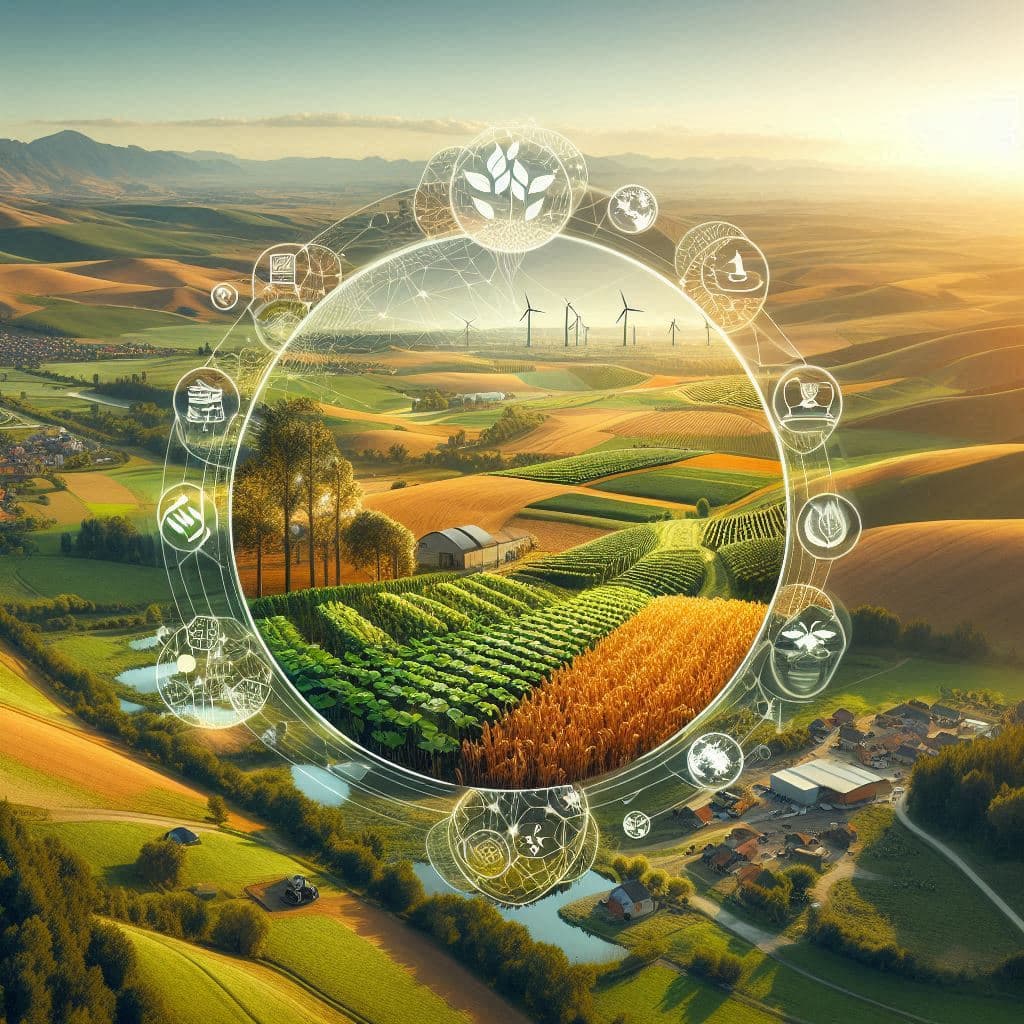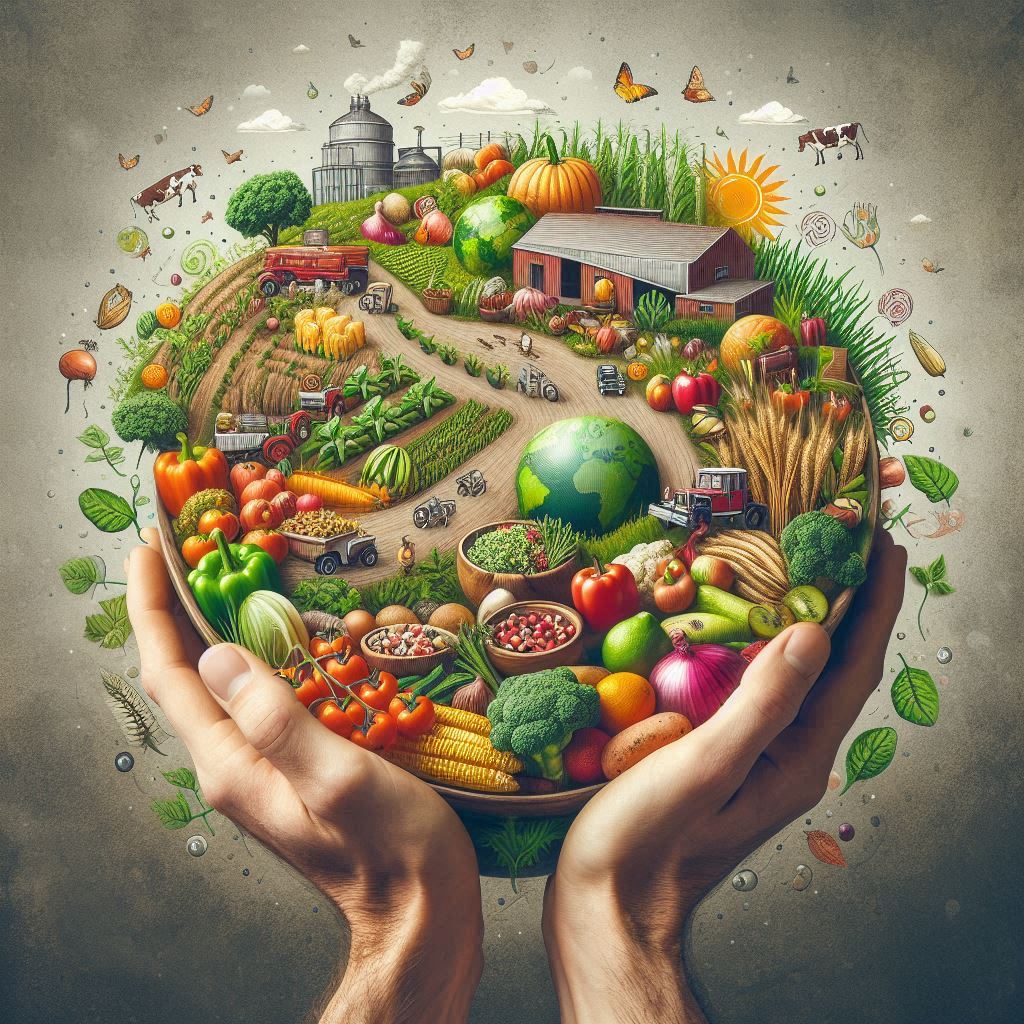1. Holistic Approach:
Sustainable agriculture goes beyond mere crop production. It considers the entire ecosystem, including soil health, water conservation, and biodiversity.
Practices like crop rotation, cover cropping, and integrated pest management promote long-term sustainability.
2. Regenerative Farming:
Regenerative practices restore soil health and enhance its capacity to sequester carbon. Techniques like no-till farming and agroforestry play a crucial role.
Healthy soil means nutrient-rich food for us and a healthier planet overall.

3. Local Food Systems:
Supporting local farmers and markets is not only beneficial for the environment, but also for our communities. By choosing locally grown produce, we reduce the amount of food miles that our food travels, which in turn reduces carbon emissions and our overall carbon footprint. Additionally, supporting local farmers helps to strengthen community resilience by promoting economic stability and self-sufficiency. By purchasing from local markets, we are able to directly support the livelihoods of our neighbors and contribute to the overall health and vibrancy of our communities. Let’s prioritize buying local and supporting our farmers for a more sustainable and resilient future.
Community Supported Agriculture (CSA) programs are a great way for consumers to support local farms and have access to fresh, locally grown produce. By participating in a CSA, individuals can sign up to receive a weekly or bi-weekly box of seasonal fruits and vegetables directly from a nearby farm. This direct connection between consumers and farmers not only helps to support local agriculture, but also allows consumers to have a greater understanding of where their food comes from and how it is grown. Additionally, CSA programs often promote sustainable farming practices and help to reduce the carbon footprint associated with transporting food long distances. Overall, CSA programs are a win-win for both farmers and consumers, fostering a sense of community and promoting healthy, locally sourced food options.
4. Reducing Food Waste:
Wasted food contributes to environmental degradation. Be mindful of portion sizes, plan meals, and compost leftovers.
Sustainable agriculture aligns with minimizing waste throughout the food supply chain.
Remember, sustainable agriculture isn’t just about feeding ourselves—it’s about nurturing the Earth for generations to come. Let’s cultivate a greener, more resilient future!
5. Top 10 Sustainable Agriculture Tips for Your Home

While you might not have a vast expanse of land, you can still contribute to sustainable agriculture right in your own home and backyard. Here are some practical tips:
- Participate in Community Gardens: Join a community garden to connect with like-minded individuals and share gardening knowledge.
- Container Gardening: Grow your own herbs, vegetables, or even small fruits in containers on your balcony or patio.
- Composting: Create nutrient-rich compost from kitchen scraps and yard waste to enrich your soil.
- Rainwater Harvesting: Collect rainwater for watering plants, reducing reliance on municipal water supplies.
- Vertical Gardening: Maximize space by growing plants vertically on walls or fences.
- Seed Saving: Save seeds from your plants to grow the next generation, promoting biodiversity.
- Reduce Pesticide Use: Explore natural pest control methods like companion planting and organic pest repellents.
- Support Local Farmers: Buy fresh produce from local farmers’ markets to reduce food miles and support sustainable agriculture.
- Educate Yourself: Learn about sustainable gardening practices and share your knowledge with others.
- Reduce Food Waste: Plan meals, store food properly, and compost leftovers to minimize waste.
5. Conclusion
In the sun-kissed fields and fertile soil, we sow more than seeds—we plant hope. Sustainable agriculture isn’t a mere practice; it’s a symphony of stewardship, resilience, and nourishment.
- Harmony with Earth: Sustainable agriculture dances in rhythm with nature. It preserves soil health, nurtures biodiversity, and safeguards water resources. Each furrow ploughed, each cover crop sown—we weave a tapestry of balance.
- Economic Viability: By helping farmers adopt practices that reduce chemical use and conserve scarce resources, sustainable agriculture research plays a key role in building public support for agricultural land preservation.
- Social Equity: In the fields, we honour farmworkers—the unsung heroes who toil under the sun. Sustainable agriculture uplifts communities, ensuring fair wages, safe conditions, and dignity for all.

As we harvest abundance, let’s sow legacy. Let our tractors hum melodies of regeneration, and may every meal be a celebration of Earth’s resilience.
But the reality is that the limited arable land is quickly and paradoxically being consumed by Urbanisation, we need to incorporate Urban Farming into our Built Environment. You can read more on this at our ecommerce site: SPeS.


